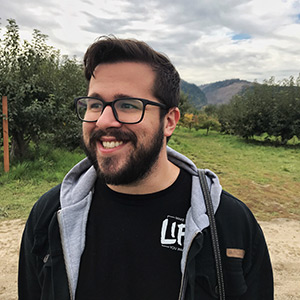While aquaculture companies around the globe have different approaches to raising seafood, there are common threads that bring different production systems together: the need for increased control across the board and the industrialization and automation of day-to-day operations.
In a Global Aquaculture Alliance presentation focused on paradigm shifts in aquaculture production systems – which took place at its virtual Global Outlook for Aquaculture Leadership (GOAL) Conference – representatives from aquaculture projects came together to talk about challenges faced in their own operations, and where they see a need for innovation in aquaculture production.
Homegrown Shrimp CEO Robins McIntosh spoke about the importance of new technologies and automation at the company’s new operation. A subsidiary of Charoen Pokphand Foods with a farm currently being constructed in Indiantown, Florida, Homegrown Shrimp has taken a self-described “unconventional approach” to shrimp farming, focusing on advanced water recycling techniques, tech that mixes local water sources with salt to provide artificial seawater supply and more automation to reduce manpower at the location to grow a never-frozen consistent shrimp product.
“We want to maintain total control, which has always been the key to successful farming,” said McIntosh, drawing lines between Homegrown Shrimp and the low-cost, high-yield U.S. poultry industry. “When you’re farming outdoors or in ponds, you’re never going to have complete control.”
Building a completely sealed, indoor system, Homegrown Shrimp aims to reduce production issues caused by disease like sea lice and natural weather patterns and ultimately lowering production costs overtime.
Land-based salmon farmer Pure Salmon, a company that aims to be the local seafood option for consumer all over the globe, is using new technologies in RAS to increase its control over seafood production and reduce external factors causing hang-ups or growth problems. Using advanced technologies, namely machine learning and artificial intelligence, to constantly track water quality and growth patterns, the company is able to address problems as they occur, reducing long-term production problems and reducing costs over time.
“There's currently rapid development in IT and sensor systems — also with cameras, visual systems, and operational management systems,” said David Cahill, Pure Salmon’s global head of production. “I think we still have a little way to go until we develop cheap IT sensors that are reliable and robust. But we're moving to a point where we can put this information into big data systems and use AI and machine learning to optimize design and operational practices.”
An investment in new technologies can reduce costs over time, but it means companies must also invest in highly-skilled workers to install, monitor and use these tools to perfect production. Pure Salmon is tackling this through in-depth training programs to recruit and teach the next-generation of seafood producers.
For offshore operations, innovation must come in the form of engineering and transportation. Norway’s SalMar, which already has one substantial offshore pilot salmon-farming project, is preparing to start construction on what it calls “Smart Fishfarm,” a much bigger “oil-rig scale” offshore emplacement.
Smart Fishfarm will be built 30- to 50-kilometer offshore and operate in waters with up to 31-meter-high waves, with an expected output of 17,000 to 20,000 metric tons of salmon annually. To operate in rough waters and in the open ocean, this location will take advantage of new technologies designed to fight the build-up of sea lice, state-of-the-art harvesting plants, and automated maintenance to protect fish from rough waters.
The decision to go bigger isn’t being made lightly – SalMar is convinced that the success of its pilot Ocean Farm 1 project, about half the size of the new project, and the technology used there proves that it can ramp up its operation, it said. At Ocean Farm 1, the company has harvested two full generations of Atlantic salmon.
“The fish farm was covered by 20,000 sensors, which have provided us a unique insight to the life of farmed salmon, which eventually have led to a biological performance we could only dream about,” SalMar Chairman Atle Eide said. “Feed conversion ratio, fish health, mortality, quality – everything is much on a much higher level than what we ever have seen before.”
While each company that presented has different goals moving forward, each is approaching the future of aquaculture with an eye for technological innovation, refusing to approach a problem without considering developing a technological solution themselves.
“I think these presentations have really opened some eyes,” GAA President George Chamberlain said. “And I think as we look back on those presentations, we are drawn to consider which one might be the winner in the future, or are there common denominators about all of them that make them all winners? I tend to think the latter.”
Photo courtesy of SalMar







